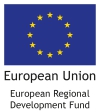P3 Well-connected region
3.1. Improved transport flows of people and goods
Southern Finland - Estonia
01.05.2018 - 30.04.2022
€2 079 872
€1 656 280
Estonia and Finland are one of the most closely connected countries in Europe. Finland is the biggest foreign labour market for Estonians and Estonia is one of the most popular tourism destinations for Finns. The influx of people and goods have constantly been growing during the last decade. Projections show that these numbers are going to increaseA great deal of these passengers (approx. 60%) use public transportation, both for work and leisure. This means purchasing at least three different types of tickets – local tickets in either Helsinki, Tallinn or Tartu, and a ferry ticket. This is time-consuming.
The journey will get even more fragmented if the passengers need to travel outside the capital regions: urther destinations, such as Tartu have their local ticketing systems, which means another purchase. The e-ticketing project aims at connecting ticketing systems in Tallinn, Tartu, and Helsinki to enable seamless travelling. The project aims at talking this challenge with three interconnected actions: Firstly, the conceptual business model will to be sorted out. Secondly, the developing the system and testing it takes place. Thirdly, project partners will pilot the joint ticketing system in Tallinn, Tartu, and Helsinki.
As a result, it is expected that the time spent on travelling can be reduced approximately by 5%.
![]() LP
LP
![]() PP
PP
![]() AP
AP
Tallinna linn
Country: EE
Partner budget: 974.553 EUR
Amount of ERDF funding: 818.624 EUR ERDF
Helsingin seudun liikenne
Country: FI
Partner budget: 959.140 EUR
Amount of ERDF funding: 709.284 EUR ERDF
Tartu Linnavalitsus
Country: EE
Partner budget: 187.394 EUR
Amount of ERDF funding: 159.004 EUR ERDF
Achieved results
E-TICKETING created interoperability between the electronic ticketing systems in Estonia and Finland
Project developed a joint mobile ticket system that crosses the borders of Finland and Estonia. With the new ticket system it’s possible to buy public transport tickets for all three cities: Helsinki, Tallinn and Tartu with one app, and there is no longer need to buy a plastic card or paper ticket when traveling from another country.
Travelers from Estonia to Helsinki can use the mobile application to buy a single public transport ticket.
Holders of the Helsinki Travel Card (Matkakortti) can buy and store Tallinn and Tartu day tickets on their travel card.
Passengers can view all trip details on the websites www.pilet.ee and www.hsl.fi.
The name of the application is Pilet.ee 2020. The application is available for both iOS and Android systems.
Even without the app, the HSL Matkakort holder has the option to buy public transport day tickets for Tallinn and Tartu on their card.
- Common ticketing was developed for public transportation in Helsinki, Tallinn and Tartu.
- Simplify payments and reduce the time of travel procedures.
Other media visibility
Tartu tahab pakkuda Tallinna ja Helsingiga ühist ühistranspordi piletisüsteemi
Tallinn juhib Eesti ja Soome ühise transpordi piletisüsteemi projekti
Tallinn, Tartu ja Helsingi soovivad luua piletisüsteemi ristkasutust
Таллинн, Хельсинки и Тарту хотят создать единую систему продажи билетов
Тарту будет участвовать в создании единой билетной системы с Таллинном и Хельсинки




